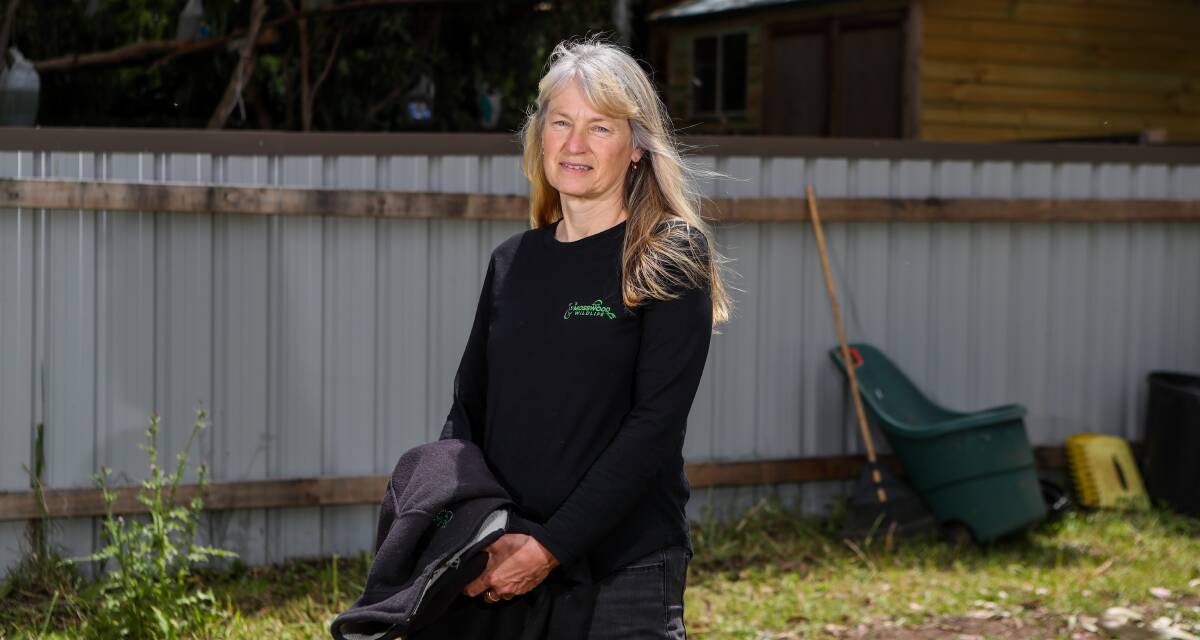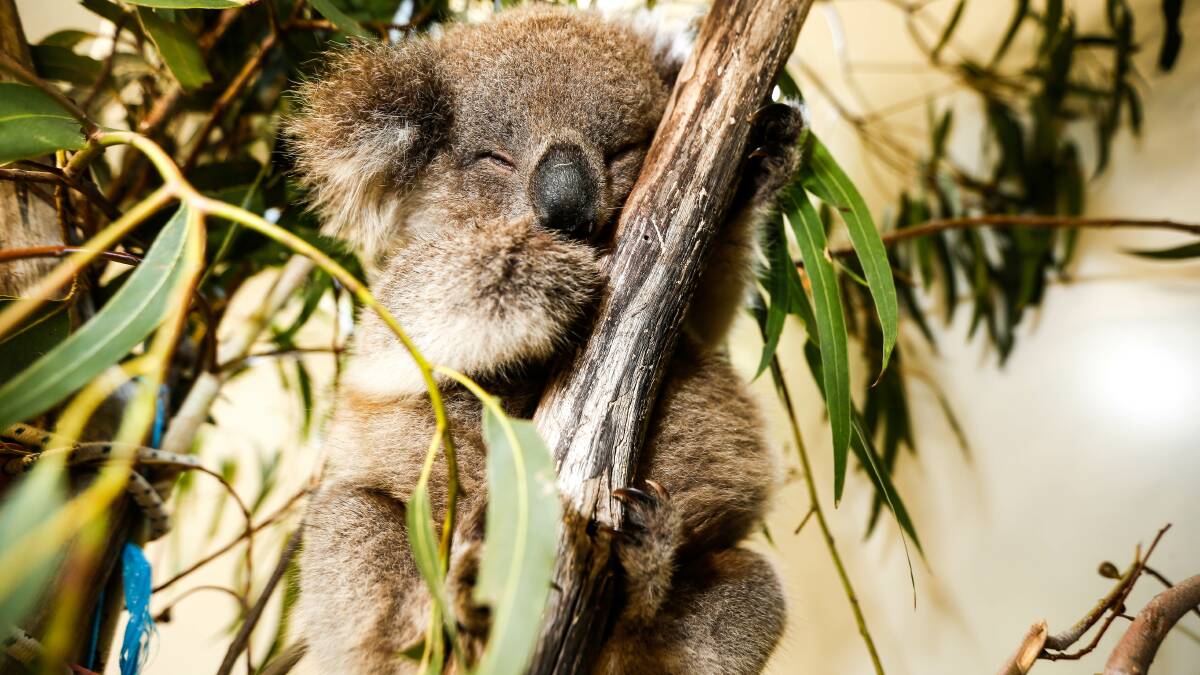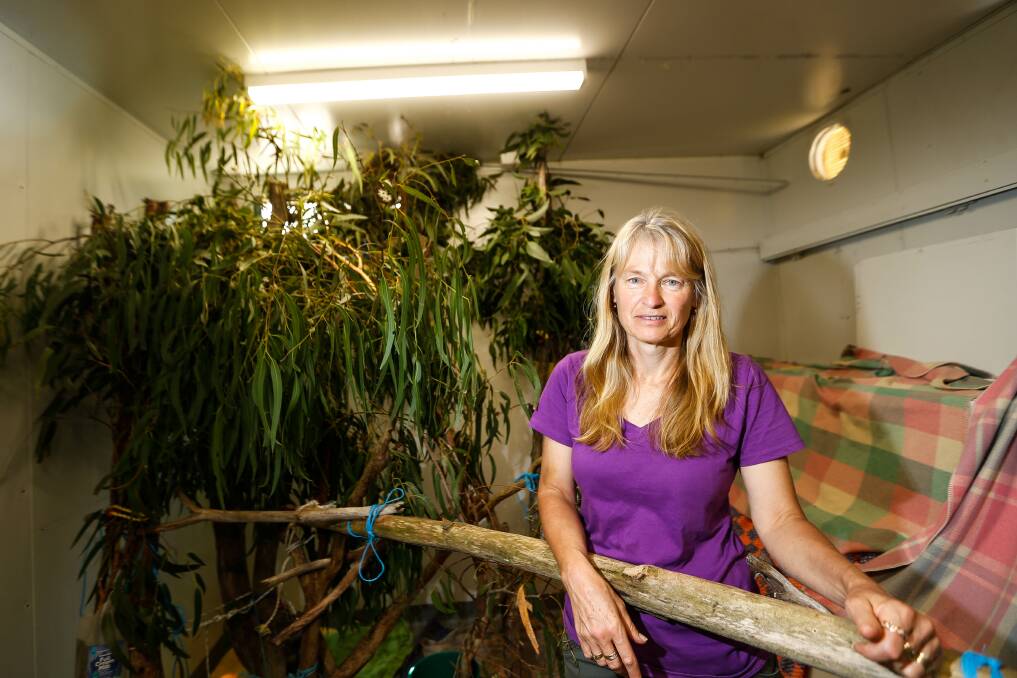
Victoria's koalas avoided joining their NSW and Queensland cousins on the endangered species list last month, but a local expert has told The Standard things are far from rosy in the south-west.
Subscribe now for unlimited access.
or signup to continue reading
Recent estimates put the Victorian koala population at more than 450,000, which would suggest they are thriving.
Mosswood Wildlife's Tracey Wilson said this figure was most likely an underestimate, and far from signalling a healthy, secure population, it showed a mounting catastrophe for the species - especially in south-west Victoria.
"The blue-gum industry is a huge contributing factor to the problem," she said.
The blue-gum (Eucalyptus globulus) is one of the koala's favourite food trees. It is also a favourite tree of the timber industry and has been planted on a massive industrial scale through the "green triangle" region of the south-west.
"It's basically the area from Bessiebelle to the South Australian border and up to Hamilton. If you do a timeline on Google Maps from the 1990s to now you can see how much it's changed," Ms Wilson said.
The industry took off in the early 2000s when many south-west farmers were having a difficult time and were more than happy to lease or sell their land to the blue-gum companies
The Victorian government puts the area under blue-gum plantations at 130,000 hectares (1300 square-kilometres), but Ms Wilson said she thought it was more than 160,000 hectares.
"Everyone thought it was great at the time. Nobody expected koalas would move into them," she said.
IN OTHER NEWS:
But move in they did, and the population skyrocketed, which presented a problem because the blue-gums had only been planted to be cut down again for timber.
"Prime cut-time is around 13 years, which is two to three generations of koalas. And it's not just one block, it can be anywhere between 50 and 400 hectares," Ms Wilson said.
The Department of Environment, Land, Water and Planning estimated 8000-10,000 hectares were harvested annually.
"So where do you put the koalas?" Ms Wilson asked.
DELWP is in the process of developing a Koala Management Strategy to replace the previous plan, which dates back to 2004.
The draft strategy, which is out for public consultation until April 3, acknowledged "koala populations have increased to unsustainable densities" in some areas.

"Due to the high koala density in the plantations in south-west Victoria, harvesting has resulted in koala welfare impacts as the plantations are clear-felled and koalas can be injured, killed, and displaced as a result of the harvesting operations," it said.
"DELWP and the blue gum industry are working together with the aim of reducing the koala incident rate to zero, however, this is a considerable challenge due to the difficulty detecting koalas in the plantations."
Ms Wilson said it was clear DELWP could see the scale of the problem, but weren't devoting the enormous resources necessary to getting it under control.
"Our biggest problem is we have no real idea what our population is. We are talking hundreds of thousands," she said.
DELWP's latest estimate of the south-west population was 46,917, but other estimates have put the figure closer to 200,000.
Ms Wilson said the strategy refused to properly "factor the blue-gum industry into the landscape". "When they plant blue gums they need to also plant natives in buffer zones so the koalas have somewhere to go when the trees come down," she said.

Victoria's green triangle is ideally suited to blue-gum plantations, with a high water table helping the trees grow quickly and a large, nearby port reducing transport costs.
Ms Wilson said it was important to realise the blue-gum industry wasn't going anywhere.
"Portland is the biggest exporter of hardwood chip in the world," she said.
The draft strategy said, far from diminishing, there were "likely to be significantly more plantations established throughout Victoria to meet the demand for timber in the future".
That may seem like a good reason to grapple with the toll taken on the koala population, but the draft strategy didn't offer any solutions.
"The only way to exclude koalas from new or regenerating plantations is to fence the entire boundary with koala-proof fencing, however this would be costly due to the size of the plantations," it said.
The two "actions" it proposed were to research new koala detection methods, and investigating options to mitigate the impact of koala displacement when plantations were cut down. There was no plan to go beyond "identifying and assessing potential options".
Ms Wilson said there wouldn't be meaningful change unless the blue-gum industry was forced to comply.
In the meantime, she said koalas would continue to suffer.
"They'll keep getting flattened on the road, or attacked by dogs and the people who end up picking up the pieces are the volunteers."
Our journalists work hard to provide local, up-to-date news to the community. This is how you can access our trusted content:
- Bookmark https://www.standard.net.au/
- Make sure you are signed up for our breaking and regular headlines and newsletters
- Follow us on Facebook, Twitter, Instagram and LinkedIn
- Tap here to open our Google News page.
- Join our Courts and Crime Facebook group and our dedicated Sport Facebook group
- Subscribe
Now just one tap with our new app: Digital subscribers now have the convenience of faster news, right at your fingertips with The Standard:
Have you signed up to The Standard's daily newsletter and breaking news emails? You can register below and make sure you are up to date with everything that's happening in the south-west.















